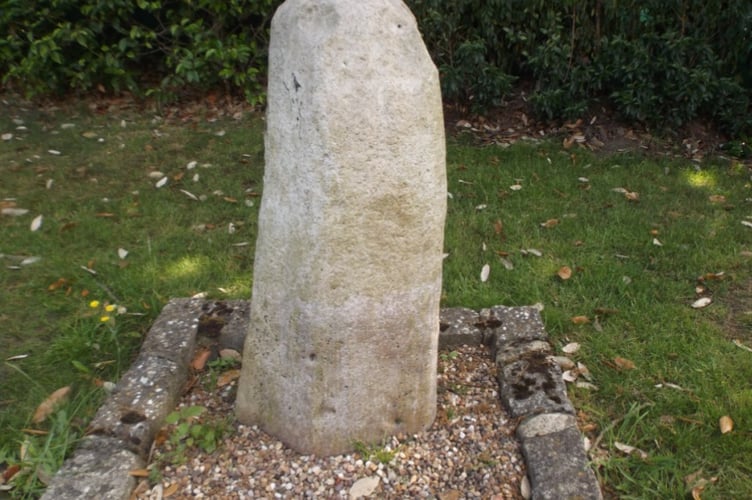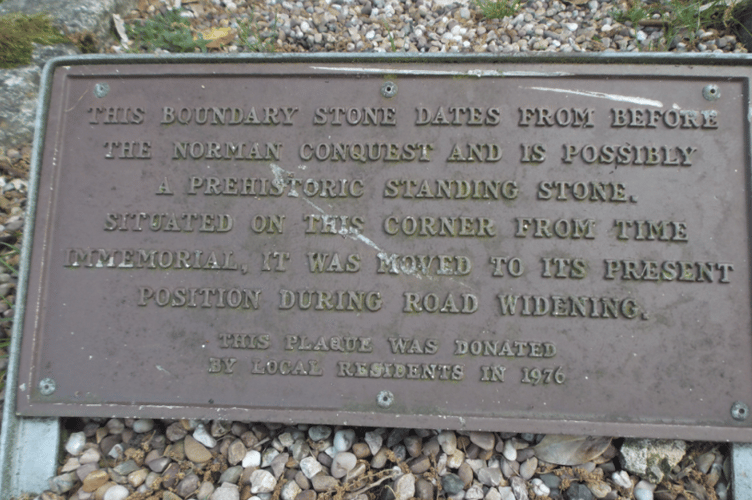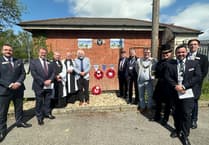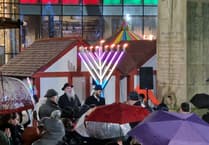MYSTERY surrounds what is known as the Pyrford Stone, that can be found on top of Pyrford Hill, now a grade II listed monument whose origin is unknown but is said anecdotally to date before the Norman conquest.
Reader Mark Coxhead has been looking into its history. He says since present-day Pyrford began early in the 1950s, when most of its woods were felled to make way for new roads and houses, many landmarks have vanished, but others remain, like the mysterious Pyrford Stone.
He has found that the stone does not appear on any ancient maps, while the scanty of any information in the historical records has not prevented the advancement of numerous theories as to the stone’s origins and purpose.
The Pyrford Stone has various aspects of folk law associated, and one legend is that either when it ‘hears’ the cockcrow at dawn or every night, when the clock of St Nicholas’ church strikes twelve, then the stone will turn. This is odd since St Nicholas’ church has never had a clock.

The stone now stands at the entrance of Pyrford Court, but originally stood at the three-way junction of Upshot Lane, Pyrford Common Road and Church Hill. Moved in 1965 to Sandy Lane and 10 years later moved to the entrance of Pyrford Court as a result of a campaign lead by the late Sylvia Lewin and Merlyn Blatch. The current plaque was added in December 1976.
It is a sandstone block, that measures around 33in high and 38in at the base. The northern face, near the top, there has been carved a Latin cross 9in wide and 6in horizontal.
In a pamphlet, Sacred Stones and Holy Water, written by Roman Golicz and published in 2004, he speculates on five possible explanations for the stone’s presence.
1. A boundary stone of pre-Conquest origin. Not thought to be positioned on any historic boundary, although in a circular of 1880 sent to the parishioners of Pyrford reference is made to an ancient lane leading to the Pyrford Stone.

2. A stone accidentally dropped during the construction in the 1190s from the wagons carrying stone for the building of Newark Priory and erected by persons unknown at the road site. Not thought to be a possibility due to the costly and dissimilar nature of building materials for the priory.
3. A sanctuary stone to give sanctuary to anyone fleeing persecution pointing the way to Pyrford Church. Not thought to be viable as too close to the church.
4. A sacred stone – perhaps a relic of pagan worship transferred to Christian use, as it is incised with a cross on the front face. Standing stones at principal road junctions were placed to signify the spiritual significance of crossroads and intersections. The original name of a nearby field was Holy Cross.
5. Ley lines – to signify links between religious sites.
If you have some memories or old pictures relating to the Woking area, call me, David Rose, on 01483 838960, or drop a line to the News & Mail.
David Rose is a local historian and writer who specialises in what he calls “the history within living memory” of people, places and events in the west Surrey area covering towns such as Woking and Guildford. He collects old photos and memorabilia relating to the area and the subject, and regularly gives illustrated local history talks to groups and societies. For enquiries and bookings please phone or email him at: [email protected]
For the full story get the 7 November edition of the News & Mail




-call-handlers.jpeg?width=209&height=140&crop=209:145,smart&quality=75)